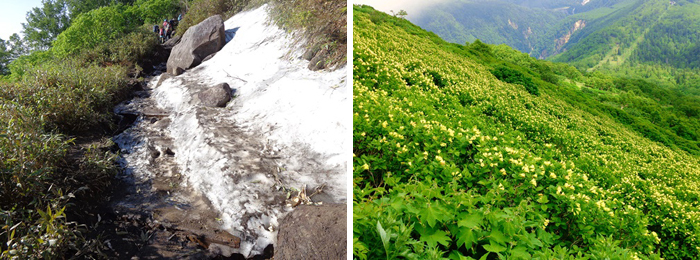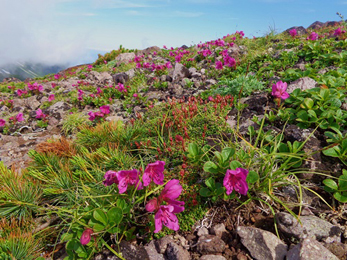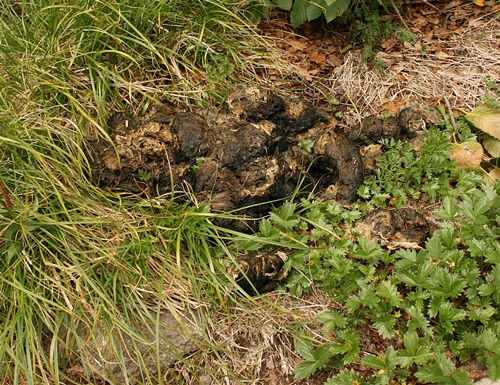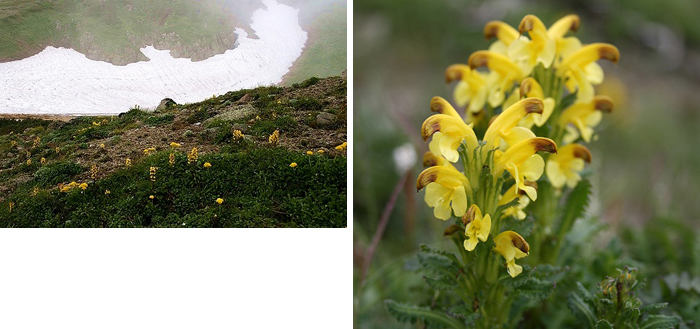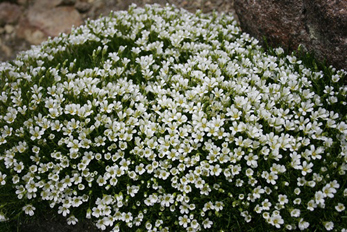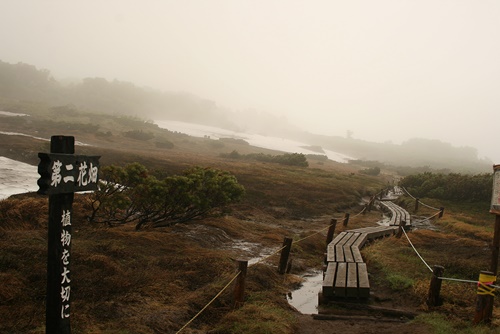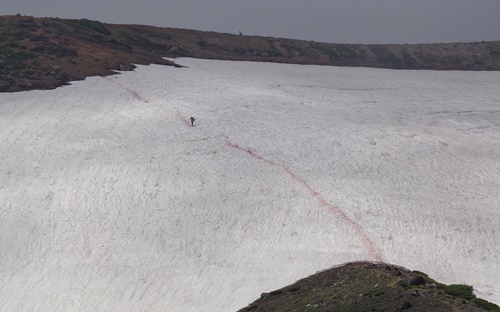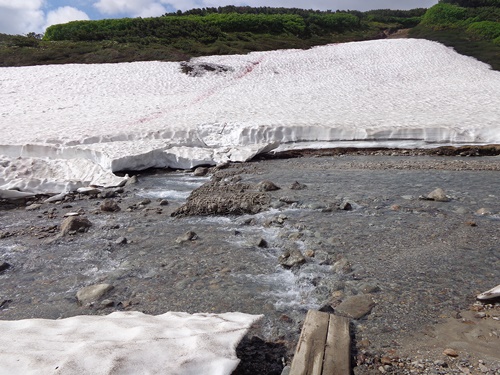The conditions of the snowy gorges on the trail have changed dramatically since the previous report.
I found during my descent that the gorge of around 2 meters that existed past the 7th Station snow depth pole had completely disappeared. With this, all of the snow has melted between the northeast face of Mt. Kurodake and the Hokuchindake junction. (The snow in front of the Ohachidaira lookout also disappeared today.)
The number of blooming Weigela middendorffiana flowers has increased even more from the 8th Station to the peak. These flowers are in their best viewing season, although some wilting can now be seen near the peak. The trail has become even more colorful with the addition of Weigela middendorffiana as well as Trollius riederianus, Geranium erianthum f. pallescens, and Dactylorhiza aristata.
In addition, communities of Therorhodion camtschaticum have formed between the peak and Pon Kurodake. Mixed in among them are Patrinia sibirica, Dicentra peregrina, and Pennellianthus frutescens that make this area very attractive as well.
Photos: Near Mt. Kurodake’s 7th Station (left), near the 9th Station (center), and near the peak (right) Jul. 16
I found during my descent that the gorge of around 2 meters that existed past the 7th Station snow depth pole had completely disappeared. With this, all of the snow has melted between the northeast face of Mt. Kurodake and the Hokuchindake junction. (The snow in front of the Ohachidaira lookout also disappeared today.)
The number of blooming Weigela middendorffiana flowers has increased even more from the 8th Station to the peak. These flowers are in their best viewing season, although some wilting can now be seen near the peak. The trail has become even more colorful with the addition of Weigela middendorffiana as well as Trollius riederianus, Geranium erianthum f. pallescens, and Dactylorhiza aristata.
In addition, communities of Therorhodion camtschaticum have formed between the peak and Pon Kurodake. Mixed in among them are Patrinia sibirica, Dicentra peregrina, and Pennellianthus frutescens that make this area very attractive as well.
Photos: Near Mt. Kurodake’s 7th Station (left), near the 9th Station (center), and near the peak (right) Jul. 16
